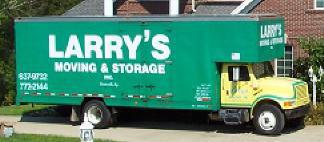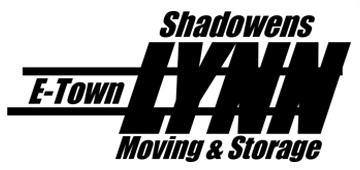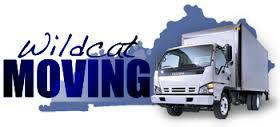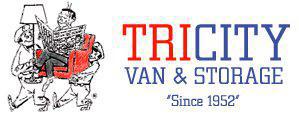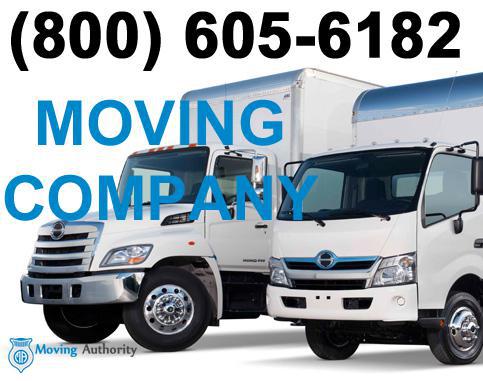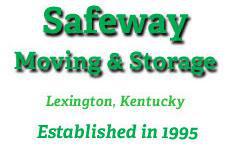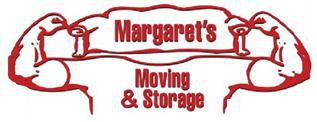LAST REVIEW
<QuerySet [<Review: Isaac G, Do not ever use>, <Review: Anthony, Worst service e>, <Review: Suzie Guy, Derek and Dwayn>, <Review: Tony Mcgrew, Movers that mov>, <Review: Susan Lugo, I had an awesom>, <Review: Tracey beck, Cannot say enou>, <Review: Tracey beck, Sorry type o...>, <Review: ROXANNA S MEERS & JAMES PETTIT, RICHARD D, HASS>, <Review: Megan, , Responsivenes>, <Review: Ann W Hines, Sal Russo and J>]>
5
1
4
Reviewed <QuerySet [<Review: Isaac G, Do not ever use>, <Review: Anthony, Worst service e>, <Review: Suzie Guy, Derek and Dwayn>, <Review: Tony Mcgrew, Movers that mov>, <Review: Susan Lugo, I had an awesom>, <Review: Tracey beck, Cannot say enou>, <Review: Tracey beck, Sorry type o...>, <Review: ROXANNA S MEERS & JAMES PETTIT, RICHARD D, HASS>, <Review: Megan, , Responsivenes>, <Review: Ann W Hines, Sal Russo and J>]> times,
customer satisfaction.
United States
Kentucky
Clay
Sal Russo and Joe Pryor moved our household last Sunday, 2/28. They were professional, polite and friendly. The worked like Trojans for 7-8 hours in the pouring rain and did a superb job. I will recommend these young men and Cardinal Moving to everyone I know!
LAST REVIEW
<QuerySet [<Review: Evan W., Friendly staff,>, <Review: Suzanne Thompson, We are so pleas>, <Review: Pic T, These movers re>, <Review: James Gillman, If you want the>, <Review: Shannon, Grear hard work>, <Review: Vicki Clark, This business i>, <Review: Vicki Clark, This business i>, <Review: Dee Denton, Josh & Nick wer>, <Review: Ethan Lambert, DO NOT USE THIS>]>
5
1
4
Reviewed <QuerySet [<Review: Evan W., Friendly staff,>, <Review: Suzanne Thompson, We are so pleas>, <Review: Pic T, These movers re>, <Review: James Gillman, If you want the>, <Review: Shannon, Grear hard work>, <Review: Vicki Clark, This business i>, <Review: Vicki Clark, This business i>, <Review: Dee Denton, Josh & Nick wer>, <Review: Ethan Lambert, DO NOT USE THIS>]> times,
customer satisfaction.
United States
Kentucky
Masonic Home
DO NOT USE THIS "COMPANY."
Repeated for emphasis: DO NOT USE THIS COMPANY! Seriously. You will not be satisfied with the service provided by Larry's moving. Go with another group.
Don't be like me. Schedule with another company and save yourself the stress. Details below.
Detail:
1. Did not call morning of the move to let me know when they were arriving. (Guess how late they were?)
2. Tried to claim that the street in front of my house was too unsafe for them to park. Nearly cancelled the whole job. I lived on a side street with an elementary school. Slow speed signs are posted and the street is rarely used by people who don't live there. Especially on a Saturday, which is the day I moved.
This point is more understandable. Worker safety is important. The way the point was raised left a very bad first impression though. The start time was not changed until I complained.
3. Worker (crew LEADER) brought a lit cigarette into my home. And at least two out of the three smoked on the moving truck with my items inside. I could hardly sleep last night because my bed now reeks of cigarettes.
4. The movers will work as slowly as absolutely possible and will take lunch on your time. One employee literally had his partner and children show up. So there were screaming kids running around for a solid 45 minutes while the clock was running.
Aside from bring your kid to work day, the movers will just disappear for a half hour at a time. No items will be moved and then they will suddenly reappear to grab one more thing before taking another 38 minute breather. They weren't organizing the truck either. I could see from my balcony that it was the crew leader arranging the truck while the two workers stood by and smoked. I have pictures. Probably had something to do with one of the crew being drunk.
5. The workers assigned to your move may SHOW UP DRUNK/HUNGOVER. I know what alcohol smells like. One worker showed up smelling like a human sized bottle. Even the crew leader was dissatisfied with this employee. I could tell when the two of them started an intense conversation (shouting) in my home about if drunk guy wanted to leave.
6. You will end up moving items anyway. The crew had disappeared for another twenty minute stretch and were entering their fourth hour of a two hour estimate. I ended up moving items out of my apartment myself just to keep things moving.
7. The crew will make racist jokes. My friend got Chinese food while we were waiting on the crew. One of the workers made a joke about Asian Americans to my friend as they passed. Because who doesn't like racism to go with their move in day?
8. Your items will be lost or damaged. The movers did not bring in the legs to my $500 desk. Of course the company was closed when I noticed the legs were gone. Then the movers left giant red streaks on my old apartment's walls. And my roommate's bed frame was damaged. Plus the movers did not use straps when moving my dryer.
LAST REVIEW
<QuerySet [<Review: Kelly M, They showed up >, <Review: Hershey D., They took great>, <Review: Rodney P Dempsey, Monte is the gr>, <Review: Denise, Do not use this>, <Review: Sarah, I had a great e>, <Review: Charlene, I highly recomm>]>
5
1
4
Reviewed <QuerySet [<Review: Kelly M, They showed up >, <Review: Hershey D., They took great>, <Review: Rodney P Dempsey, Monte is the gr>, <Review: Denise, Do not use this>, <Review: Sarah, I had a great e>, <Review: Charlene, I highly recomm>]> times,
customer satisfaction.
United States
Kentucky
Loretto
I highly recommend montes movers.we had a great exsperince with jason and his crew very hard workers and fast and great at what they do..
LAST REVIEW
<QuerySet [<Review: Sasha Coleman, I had an extrao>, <Review: Shane C., The group was A>, <Review: Sylvia Graham, Great movers! C>, <Review: Elsie Sullivan, These guys were>, <Review: Victorian Martin-Offner, 1. Truck damag>]>
5
1
4
Reviewed <QuerySet [<Review: Sasha Coleman, I had an extrao>, <Review: Shane C., The group was A>, <Review: Sylvia Graham, Great movers! C>, <Review: Elsie Sullivan, These guys were>, <Review: Victorian Martin-Offner, 1. Truck damag>]> times,
customer satisfaction.
United States
Kentucky
Neosho Falls
- Victorian Martin-Offner
1. Truck damaged my mail box and my neighbors yard upon arrival.
2. They would not load my grill even though the propane tank had been removed. There was space on the truck for it. I would not sign the inventory list then. They waited 5 days to send a doc u sign, electronically.
3. Truck finally loaded on June 17. Furniture scheduled to arrive on 24th June. Got an email the day before stating that the driver was delayed. Since that email, there has been NO COMMUNICATION since. I have no idea wen my shipment is arriving or what the cause of the delay is.
4. 20 + moves and this is the first time that this has happened.
Extremely stressful. I do not recommend this company to anyone and will be filing a complaint.
LAST REVIEW
<QuerySet [<Review: Brendon L, WARNING: I hir>, <Review: Eddie J., They were super>, <Review: Lonny S., Best moving com>, <Review: Sharon C. /Amy K, I simply can no>, <Review: Sharon C. /Amy K, I simply can no>]>
5
1
4
Reviewed <QuerySet [<Review: Brendon L, WARNING: I hir>, <Review: Eddie J., They were super>, <Review: Lonny S., Best moving com>, <Review: Sharon C. /Amy K, I simply can no>, <Review: Sharon C. /Amy K, I simply can no>]> times,
customer satisfaction.
United States
Kentucky
Masonic Home
I simply can not say enough great things about
Michael Ball Moving and Storage! This move was at the end of a long process of selling and buying... the move was no less complicated. It happened over 2 days even though it was a local move. The team of 4 gentlemen were consistently above and beyond what I had experienced in any of my 9 moves. They were professional prompt courteous careful pleasant and reasonable. Moving is never easy but M Ball moving team made it pretty terrific! A five star review is not high enough praise!
LAST REVIEW
<QuerySet [<Review: Bretha L., The team where >, <Review: Joni A, Not only were T>, <Review: Valerie Thomas, I used this com>, <Review: Valerie Thomas, I used this com>]>
5
1
3
Reviewed <QuerySet [<Review: Bretha L., The team where >, <Review: Joni A, Not only were T>, <Review: Valerie Thomas, I used this com>, <Review: Valerie Thomas, I used this com>]> times,
customer satisfaction.
United States
Kentucky
Loretto
I used this company in May 2021 to move from lexington ky to Richmond ky the words experience ever.The movers broke the fence from the property I was moving from and will not take responsibility for it.jack called my 15 year old dog stupid.I have complained to the corporate office no one is willing to take responsibility for what was broken or how I was treated nor will they offer any type of compensation. PLEASE DO NOT USE THIS COMPANY .I have relocated all over the world being military connected and I can truly say this was my first bad experience with a moving company.
LAST REVIEW
<QuerySet [<Review: Gloria C., Moyers Transfer>, <Review: James O., I would need to>, <Review: Floyd A, They were super>, <Review: Amanda Torres, This is the WOR>]>
5
1
4
Reviewed <QuerySet [<Review: Gloria C., Moyers Transfer>, <Review: James O., I would need to>, <Review: Floyd A, They were super>, <Review: Amanda Torres, This is the WOR>]> times,
customer satisfaction.
United States
Kentucky
Ingram
This is the WORST company ever! They overcharged my mother by $250, and now they won't return any of our calls! Avoid them at all costs. You can't go much lower than to rip off an elderly widow woman. They should be ASHAMED!
LAST REVIEW
<QuerySet [<Review: NICOLE T., Extremely amate>, <Review: Jordan R., I as of late ha>, <Review: Robert A., Team was prompt>, <Review: P. Rogers, Arrow was very >]>
5
1
4
Reviewed <QuerySet [<Review: NICOLE T., Extremely amate>, <Review: Jordan R., I as of late ha>, <Review: Robert A., Team was prompt>, <Review: P. Rogers, Arrow was very >]> times,
customer satisfaction.
United States
Kentucky
Loretto
Arrow was very professional and reliable for our move. They went out of their way to accommodate us and for storage, their services are a great value.
LAST REVIEW
<QuerySet [<Review: Sammy R., THE BEST EVER, >, <Review: Patrick Hughes, Tri City was in>, <Review: Patrick Hughes, Tri City was in>]>
5
1
4
Reviewed <QuerySet [<Review: Sammy R., THE BEST EVER, >, <Review: Patrick Hughes, Tri City was in>, <Review: Patrick Hughes, Tri City was in>]> times,
customer satisfaction.
United States
Kentucky
Crothersville
Tri City was in charge of pressing up the greater part of the substance of our home and putting away these possessions while our house was being torn down and remade as a major aspect of the Extreme Home MakeOver in Louisville, KY. Each and every thing from our old house was pressed safely and was in flawless condition upon our unloading and dealing with the greater part of our stuff when we returned. It was astonishing they made such an incredible showing in such a brief timeframe. Their association and responsibility to carry out the occupation right was remarkable. On the off chance that they could make such an awesome showing on our turn, I'm certain they would make an extraordinary showing for everybody. Everybody at the organization is wonderful!!!!
LAST REVIEW
<QuerySet [<Review: Kathy White, Awesome company>, <Review: Laureen R., Leek Van and St>, <Review: Donny d, First off the b>]>
5
1
3
Reviewed <QuerySet [<Review: Kathy White, Awesome company>, <Review: Laureen R., Leek Van and St>, <Review: Donny d, First off the b>]> times,
customer satisfaction.
United States
Kentucky
Dexter
First off the big older guy wouldnt stop insisting that we buy him lunch, so that was annoying AF. If they're moving your stuff, watch the packers like a hawk. They packed up MULTIPLE things that we told them not to and than gave us attitude when we asked about it. THAN THEY TOLD US IF WE OPEN THE BOXES BACK UP TO GO THRU THE STUFF THEY ALREADY PACKED THEY WERE GONNA CHARGE US 5 DOLLARS A BOX THAT WAS OPENED
LAST REVIEW
<QuerySet [<Review: Ken G., Finding a depen>, <Review: Billy J., I needed to mov>, <Review: Yvonne Rose, Move from Hell.>]>
5
1
3
Reviewed <QuerySet [<Review: Ken G., Finding a depen>, <Review: Billy J., I needed to mov>, <Review: Yvonne Rose, Move from Hell.>]> times,
customer satisfaction.
United States
Kentucky
Bighill
Move from Hell. Did not covid test as promised. Did not deliver as promised. Furniture and boxes damages. Items missing. Would not use this mover or reccomend him . Tried to increase bill for more than quoted.read fine print Charged 15% surcharge for gas and insurance for a 2 block move. Plus added 2 hours for travel time.BEWARE OF THIS MOVER.check with police for record of complaints
LAST REVIEW
<QuerySet [<Review: Megan B, The prices were>, <Review: Christa G, Matthew and Tra>, <Review: NicoleD, We sincerely do>]>
5
1
4
Reviewed <QuerySet [<Review: Megan B, The prices were>, <Review: Christa G, Matthew and Tra>, <Review: NicoleD, We sincerely do>]> times,
customer satisfaction.
United States
Kentucky
Keene
We sincerely don't have anything awful to say! Our family's involvement with Safeway Moving was choice! To begin with let me say, we met with about six moving organizations when we were arranging our turn from Lancaster, KY to Sarasota, FL. We read such a variety of audits on the greater part of the top interstate moving organizations. Safeway = Mayflower. However, what sold us is the certainty we got subsequent to meeting with Tyler from Safeway. We met with Tyler who overviewed our "stock" and addressed our many inquiries like a master - a patient ace at that. We additionally managed Tiffany who was just as magnificent. Tyler arrived at all times. We exceptionally prescribe believing your turn to Safeway! Essentially choice!!
LAST REVIEW
<QuerySet [<Review: Robert L., Magnificent exp>, <Review: Potter H, Local move on S>, <Review: Donna Peake, I hade a local >]>
5
1
4
Reviewed <QuerySet [<Review: Robert L., Magnificent exp>, <Review: Potter H, Local move on S>, <Review: Donna Peake, I hade a local >]> times,
customer satisfaction.
United States
Kentucky
Masonic Home
I hade a local move. About a week ago and the crew was great. Thay where friendly fast and took cure of my things. I highly recommend them.
LAST REVIEW
<QuerySet [<Review: Grant H., These folks wer>, <Review: Brent Howard, I have a 3 room>, <Review: Tracy Hill, AVOID AT ALL CO>]>
5
1
3
Reviewed <QuerySet [<Review: Grant H., These folks wer>, <Review: Brent Howard, I have a 3 room>, <Review: Tracy Hill, AVOID AT ALL CO>]> times,
customer satisfaction.
United States
Kentucky
Galesburg
AVOID AT ALL COSTS!!! I don't know who is giving good ratings to these thieves unless they are friends or employees of the company. To start, they overcharged me by $100.00. They took a $100.00 deposit then charged my card for the full amount of the move, without giving credit for the $100.00 already paid.
The actual move was awful. They showed up with a truck that was far too small for the amount of items I had to move even after being given a detailed description of the number and size of items that we would be moving. They were careless with my furniture, they destroyed my computer monitor, shattered it, to where I had to purchase a new one. They scratched floors in my house, and to top it all off, they STOLE about $5,000.00 worth of jewelry, including pieces that my late father gave to my mother years ago that cannot be replaced.
All attempts to contact the company and get some type of redress have been fruitless. Even trying to get the $100.00 deposit back has been impossible. We have been given different numbers to call in Virginia (both the company and we' are in Kentucky), promised claim forms that have never been sent, and been given the runaround in every way possible.
I would give less than one star if possible. These people are dishonest crooks.
LAST REVIEW
<QuerySet [<Review: Elaine L., Margaret's simp>, <Review: Carl T., Extremely exper>, <Review: Linda, The 3 movers we>]>
5
1
5
Reviewed <QuerySet [<Review: Elaine L., Margaret's simp>, <Review: Carl T., Extremely exper>, <Review: Linda, The 3 movers we>]> times,
customer satisfaction.
United States
Kentucky
Galesburg
The 3 movers went out of their way to make sure everything was placed correctly so that I wouldn't have to move anything. Very friendly and courteous. I would definitely recommend.


